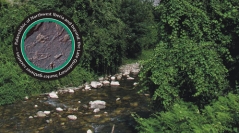

 Comptes Rendus Palevol
20 (16) - Pages 277-295
Comptes Rendus Palevol
20 (16) - Pages 277-295El Esquilleu cave has one of the most complete Middle Paleolithic stratigraphies of northern Iberia with a complete chronological framework almost continuous from the beginning of MIS3. The complete analysis of the materials including the last section of the sequence corresponding to the last chronological interval of the occupation in the region shows clear evolutionary tendencies by important changes in the composition of the lithic assemblage. Its study confirms a continuous occupation without any gaps during the Mousterian until recent dates but without any Upper Paleolithic presence. This sequence, referenced to the Mousterian settlement of the Picos de Europa mountains, testifies to the existence of a Mousterian presence in northern Iberia with no clear relation to other Cantabrian areas. Consequently, its occupation without a break until the crucial phase of the end of the Middle Paleolithic suggests a non-transitional process in the history of local Neanderthal groups.
Middle Paleolithic, cantabria, neanderthals, sequence, transition, mousterian